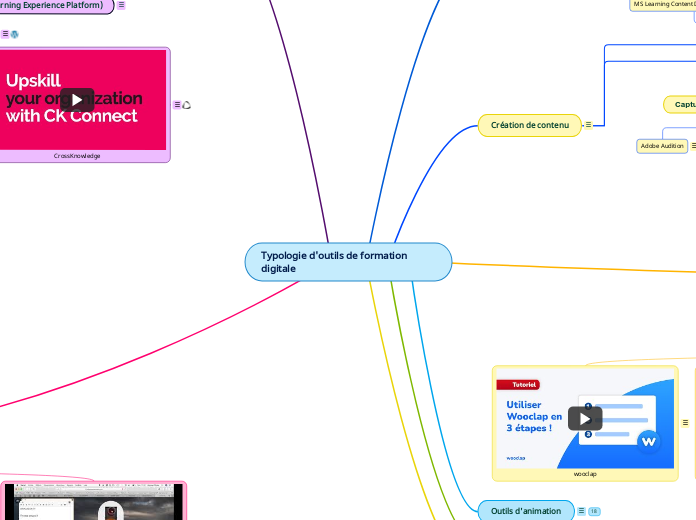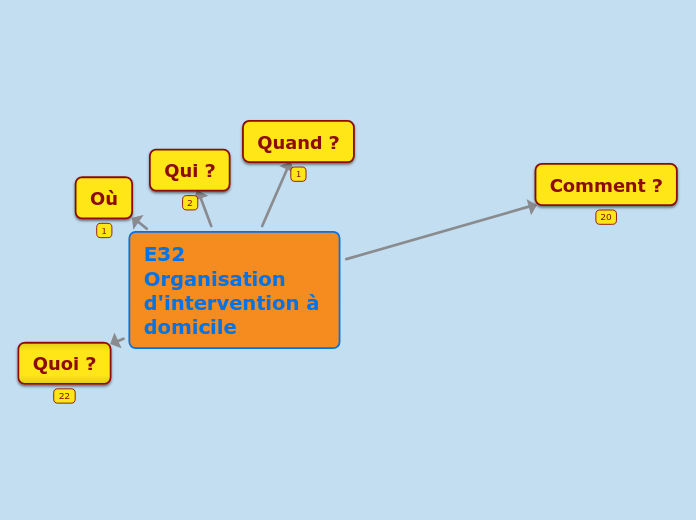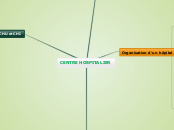1. identifier, 2, intervenir, 3 examiner, 4.oeuvrer
Les savoirs du psychoéducateurs
To name your story, you have to think about the overall message and what you want your audience to understand from the story. Also, make it relevant and easy to remember.
savoir-être
The ending of a story is essential. We all know that if the ending is weak, what happened before loses its importance. So make it unpredictable, but fair. A resolved ending answers all the questions and ties up any loose threads from the plot.
type de vécu
This is the closure section of the story.
See examples of possible outcomes below:
- all problems have been solved
- it's clear how each one of your characters ends up
- your main character is transformed by the challenge
vécu rapporté
Try answering these questions in order for you to come up with a closure:
- Have all problems been solved?
- Is it clear what happens with all your characters in the story?
- Has the challenged transformed your main character?
- How do the characters feel in the end?
l'intervenant = accès verbalement vécu du sujet.
vécu observé
permet de visualiser --> vécu (sans participation intervenant)
vécu partagé
Try answering these questions to come up with a closure:
- Have all the problems been solved?
- Is there a clear picture of what happens with each character in the story?
- Has the challenge transformed your main character?
- How do the characters feel in the end?
moments --> permettent la création du lien/ en milieu naturel.
Schèmes relationnels
This is the moment when the main character surpasses the last obstacle and finally faces their greatest challenge.
The climax usually follows one of these patterns:
- realization
- resolution
- choice
Type in your answer.
4. congruence (attitude d'honneteté/ authenticité)
5.Disponibilité (attitude permettant de partager vécu d'autrui)
6. Empathie (attitude permettant de comprendre le point de vu de l'autre)
1.considération (attitude de base d'une relation)
2. sécurité (attitude=affront d'une situation externe)
3. confiance (attitude interieur procurant un sentiment d'assurance)
Savoir-faire
The middle of the story is where you add layers of complications that will lead to the end. Reveal more about the character's journey. Did their personality go through changes? How did they overcome the challenges? And as you build up the story’s central conflict, make it more personal to that character. Also, from the middle act, you have to lead into the final act.
8. La communication
échange verbal/ à l'écrit des informations =intervenants
communication formative: permet une remise en question des façons de faire de l'intervenant
communication fonctionnelle: assure la transmission des informations
7. L'évaluation post-situationnelle
mise au point --> précédentes interventions = soutirer les forces/limites
problématique intervenant: prendre pour acquis que tout est bon.
6. L'utilisation
2 niveaux:
1) prise de conscience --> éléments de la réalités -> par l'individu (utilisation planifié)
2) appliquer à d'autres situations -->conduite acquise (utilisation appliqué)
5. L'animation
création d'un déséquilibre puis d'une rééquilibration
création d'un schème situationnel --> acquérir les connaissances.
4. L'organisation
There wouldn't be any tension and excitement in your story if there weren't any obstacles in your character's way.
mise en place--> activités nécessaire aux individu
A story is nothing more than a character overcoming a series of difficulties to reach the desired goal. Obstacles usually create suspense and conflict. In overcoming obstacles, there is growth: weak becomes strong; hatred turns into love; sadness into happiness; wrong into right; lies into truth; or evil becomes good.
See a few examples below:
- stopping a meteor
- finding a killer
- finding love
organisation sur le champs/ mise en place des conditions qui favorise l'atteinte d'objectifs
3.La planification
Your character(s) need(s) motivation in order to solve the challenge(s).
objectifs à poursuivre + moyens
Why does your character need to confront this challenge? What does he/she expect to accomplish by solving it?
See a few examples:
- will marry in 3 days
- can fix the mistakes of the past
2.L'évaluation pré-intervention
Each story has a main character and that character usually needs to solve a problem or challenge. The character's challenge is the one that creates tension throughout the story.
description --> comportements qualitative et quantitative
Type in any other challenges which other characters in the story need to face.
donne un sens à plusieurs aspects (situation/ phénomènes) + formulation d'hypothèse
1.L'observation
participante/ systématique /indirecte
savoir
In the beginning of the story (or the exposition), you will need to introduce the setting and characters. You might also want to introduce the main conflict. This part of the story is important because it gives the reader necessary background information and maybe even a first insight into a character’s personality.
7 approches
biologique/développementale/comportementale/cognitivo- comportementale/ humaniste/ systémique/ alternatives
définition
Utilisation --> stratégies probantes/ grilles avec les clients (pratique au quotidien)
3 ordres
The setting (time & place) of a story can change throughout the plot.
Les connaissances de la clientèle
The weather is an important element in your story because it can highly influence the ambiance and the mood of the characters.
Anamnèse: connaissance de la problématique / interventions antérieurs
potentiel adaptatif personnel: niveau de développement des moyens + dépend des facteurs de risques/protections
potentiel expérimental: possibilités d'apprentissage (entourage/environnement)
2 dimensions complémentaires :
The most affected character is the main character. Write down here if he/she is affected by these weather conditions in any way. For example, if they lost a family member or their home during a hurricane, etc.
1) caractéristiques de la clientèle (communes)
2) dimension idiosyncrasique de l'intervention (unicité de l'individu)
Les connaissances mésologiques
The time of the story can also change. It can describe the event of a single day or can include an entire year's plot. Anyway, don't forget to mention it.
fait référence --> milieu/ contraintes/ contexte.
exige une cohésion entre : différentes interventions /travail d'équipe
Mission organisationnelle = mieux définie: mandats plus précis
Les connaissances théoriques
Your story can take place wherever your imagination will take you to.
For example: in an elevator, in an enchanted forest, etc. Don't forget to give details of the environment each time the setting changes, otherwise, the story can be confusing. Also, mention the seasons as each of them has unique weather and events.
permet compréhension --> nature de la problématique/intervention + processus.
permet la connaissance --> modèles explicatifs/ comportement humain/ aspects développementaux/mécanismes...
Les connaissances
Characters are essential to a good story. Usually, the protagonist(s) is/are the most affected by the plot. Introduce a character by focusing on their actions, interests, and occupation, as the physical appearance doesn't make a difference in most cases.
4 types de connaissances
Type in the name of your character.
connaissance sur leslois qui existent
Add other qualities/attributes of the character.
code déontologique
connaissance sur l'intervention en général et psychoéducative
What is your character's main goal?
fight Evilfind lovedefeat his/her enemyrule the worldmake friendstime travelmake an awesome discoveryOther
connaissance sur l'humain en difficultés
Which traits best describe the character's personality? Choose more if necessary:
introvertedloyalkindindependentquick-thinkingadventuresomeidealisticsweet-naturedcalmrisk-takercreativewittystrictfussyweirdclumsyharshaggressivecarelessclingingcowardlycrueldeceitfulimpulsiveOther
types d'inadaptation, causes a effets...
connaissance sur l'être humain
Choose the type of your chacter:
Protagonist (main character)Antagonist (main character's opponent)Flat (stereotypical character)Round (his/ her personality develops throughout the story)Static (doesn't evolve as a person throughout the story)Dynamic (dramatical change in personality)Confidant (the main character trusts him/ her)Foil (contrasting character who enhances the personality of another character)Other
personnalité, façon d'apprendre et développement sur certains volets










